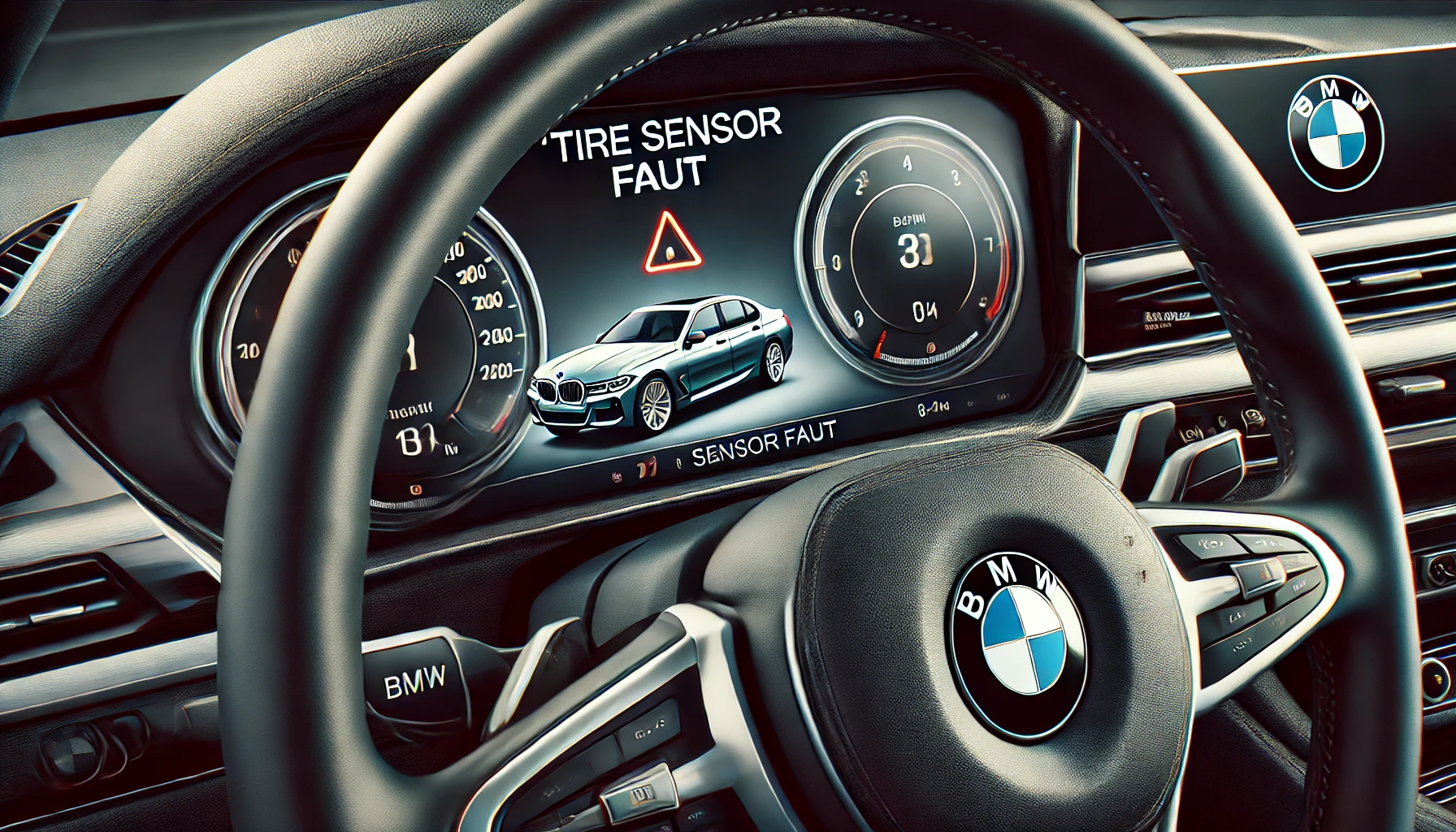
BMW vehicles are renowned for their luxury, innovation, and advanced technology. One such feature is the Tire Pressure Monitoring System (TPMS), which alerts drivers when tire pressure is too low. However, like any electronic system, it can sometimes experience faults. Seeing the dreaded “Tire Sensor Fault” message on your dashboard can be frustrating, but the good news is that fixing it is usually straightforward. In this guide, we’ll explain the common causes of a tire sensor fault and walk you through the steps to resolve the issue.
What Causes a Tire Sensor Fault?
Before diving into the fix, it’s essential to understand the common causes of tire sensor faults in BMWs:
- Low Battery in the TPMS Sensors: Tire sensors are battery-powered, and their batteries generally last for several years. When the battery runs low, the sensor may malfunction and trigger a fault.
- Tire Pressure Imbalance: If one or more tires have incorrect pressure, the sensors can send mixed signals, leading to a fault alert.
- Sensor Damage: Sensors can be physically damaged due to rough road conditions or during tire changes. A damaged sensor will fail to send accurate data to the TPMS.
- Interference with the TPMS System: External electrical interference or a software glitch in your car’s onboard system can disrupt the communication between sensors and the car’s computer, leading to a fault.
- Weather Conditions: Sudden drops in temperature can sometimes affect tire pressure, triggering a false alert from the TPMS.
Step-by-Step Guide to Fix Tire Sensor Fault
If your BMW displays a Tire Sensor Fault message, here’s how you can troubleshoot and potentially fix the issue:
1. Check the Tire Pressure
The first step is to manually check the tire pressure in all four tires. Use a tire pressure gauge to verify that each tire has the recommended pressure, which can typically be found in your vehicle’s manual or on a sticker inside the driver’s door. If any tires are under-inflated, fill them to the appropriate level.
After adjusting the tire pressure, drive for a few miles to see if the warning clears itself. In many cases, this simple step resolves the issue.
2. Reset the TPMS System
If correcting the tire pressure doesn’t clear the fault, you may need to reset the TPMS system manually. Follow these steps:
- Turn on your BMW’s ignition without starting the engine.
- Navigate to the iDrive menu and find the Vehicle Settings.
- Scroll down to Tire Pressure Monitor and select Reset.
- Confirm the reset and start driving for about 10-15 minutes at a speed above 15 mph. The system will recalibrate and, if the tire pressure is correct, the fault message should disappear.
3. Inspect the Sensors for Damage
If resetting the system doesn’t help, the problem may be a damaged sensor. Tire sensors are located inside the tire, usually attached to the valve stem. Inspect each tire visually for any signs of damage to the valve stem, which may indicate sensor damage.
If you suspect sensor damage, it’s advisable to visit a certified BMW dealership or auto repair shop to have the sensor tested and replaced if necessary.
4. Replace the Sensor Battery
As mentioned earlier, tire sensors are powered by batteries. If the sensor is functioning but its battery is weak, it can trigger a fault. However, the batteries in TPMS sensors are not easily replaceable by the average driver, and the whole sensor may need replacement. A visit to the dealership or an experienced mechanic will be required to replace the sensor unit.
5. Update the Vehicle’s Software
In some cases, especially in newer BMW models, a software glitch could be the culprit. Ensure your vehicle’s iDrive software is up to date. BMW releases software updates that can fix bugs and glitches, including those affecting the TPMS. You can update your software at a dealership or by using BMW’s ConnectedDrive services.
Preventing Future Tire Sensor Faults
- Regular Maintenance: Regularly check your tire pressure and inspect your sensors, especially after rough road conditions or tire changes.
- Professional Inspections: Have your tire sensors inspected during routine servicing to catch potential issues before they become bigger problems.
- Keep Software Updated: Ensure your BMW’s onboard systems are running the latest software to minimize the chances of TPMS faults caused by software issues.
Conclusion
Dealing with a Tire Sensor Fault in your BMW can be annoying, but in most cases, it’s a minor issue with a simple fix. By regularly maintaining your tire pressure, ensuring the TPMS system is calibrated, and seeking professional help when needed, you can keep your BMW running smoothly and safely.
When in doubt, don’t hesitate to visit a BMW-certified service center for expert advice and service. They can provide accurate diagnostics and help prevent future issues.
